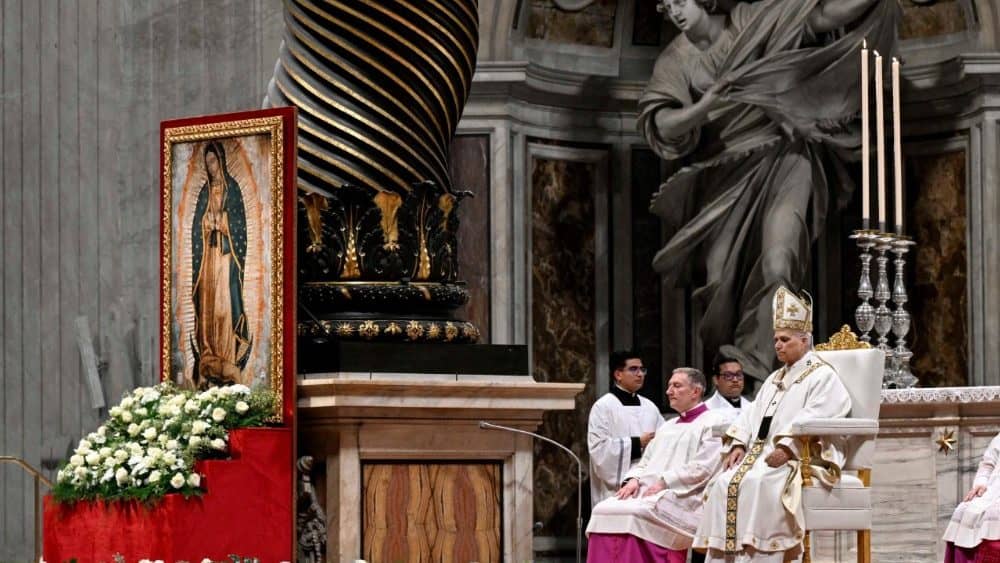ROME— Quietly but steadily, with the backing of Pope Francis, the Vatican is reviving the idea that there’s really only one “America,” a Church that works together as a continent, instead of being perennially divided into north and south.
“With the fall of the walls of political, ideological and military opposition between the East and the West, Saint John Paul II called also to overcome the walls of opposition between the North and the South,” said Guzman Carriquiry.
“What other place could be so favorable to undertake this task than America, which more than 60 percent of all Catholics call their home?”
Carriquiry, secretary of the Vatican’s Pontifical Commission for Latin America, was speaking at a conference held this Saturday in Rome, a collaboration between his office and the Diocese of Denver.
According to the Uruguayan layman, one of Pope Francis’s closest advisers, his office and the Vatican at large are trying to recover Saint John Paul II’s “prophetic intuition” when he convoked a Synod of Bishops for America in 1997, and then published the apostolic exhortation “Ecclesia in America.”
Saturday’s symposium, called “Witness of mercy in the Americas,” showcased the lives of four missionaries of the United States and Mexico, presenting them as models of unity for the continent.
The four personalities, all in the path towards sainthood, were:
- Julia Greeley, also known as Denver’s Angel of Charity, who was born into slavery, and once freed spent most of her life helping the poor in the Denver area. She was defined as an example of the “enduring power of mercy.” Despite her suffering at the hands of white people, she held no grudge, helping all poor people, no matter their race.
- Father Eusebio Kino, an Italian Jesuit, missionary, explorer, cartographer and astronomer who spent the last 24 years of his life preaching in what today is northern Mexico and southern Arizona.
- Antonio Margil de Jesus, a Spanish missionary who worked in Mexico, Costa Rica, Nicaragua, Guatemala, and Texas.
- Father Michael Joseph McGivney, an American Catholic priest who founded the Knights of Columbus to serve as a mutual aid and fraternal insurance organization for immigrants and their families. He could become the first American-born priest to be declared a saint.
Jonathan Reyes, director of the Department of Justice, Peace, and Human Development of the United States Bishop’s Conference, spoke about Kino, whom he described as one of the biggest missionaries on the continent, and a model for this Jubilee of Mercy.
This “friar on a horse,” Reyes said, “understood the importance of the inculturation of the Christian message in the Arizona region and in northern Mexico.”
Among other things, Kino promoted the idea of there being only one America at both geographic and cultural levels.
Saturday’s conference is not the first recent initiative to promote a bigger interaction between North and South America.
Last month, over 130 bishops and cardinals coming from Canada to Argentina, and every country in between, met in Colombia, to celebrate the Holy Year of Mercy at a continental level.
That gathering, also put together by the Pontifical Commission for Latin America, but with the help of the Bishops Conference of Latin America and the Caribbean (CELAM), opened with a video message from Francis.
In his message, history’s first pope from the global south said he was “pleased” to see so many countries participating: “Given the many attempts to fragment, divide and set our peoples at odds, such events help us to broaden our horizons and to continue our handshake; a great sign that encourages us in hope.”
Although gaining its winds from the Argentine pontiff, these two gatherings show that the push for a “continental mission,” a concept developed in the 2007 meeting of Latin American bishops in Aparecida, building up from the 1997 synod of bishops and the apostolic exhortation Ecclesia in America, is not coming only from the south.
One of the representatives from the United States in Colombia was Archbishop Jose Gomez of Los Angeles. Speaking with Crux on Friday, he said he welcomed the gathering because John Paul II’s “prophetic” vision of one continental Church is not so clear anymore.
Although both initiatives were framed under the Holy Year of Mercy, it also comes as the Church, both in the north and south, tries to stop the downward trend in the number of faithful.
According to a 2014 study from the Pew Research Center, the percentage of Catholics went from 90 in the 1960s to 69 at present.
U.S. Catholics at large, but Hispanics in particular, are seeing a similar tendency. Among millennials, they represent close to 60 percent of the total, yet a 2013 study from Pew shows that one in four adult Latinos are now “former” Catholics.
As a footnote, some observers pointed out last September, as Francis was headed to the United States, that outreach towards the Latino community was one of the reasons he chose to deliver 14 of his 18 addresses in the country in his native Spanish.
The efforts from the Vatican and the bishops also come as the social challenges throughout the continent become more generalized: poverty, unemployment, migration, racial division and violence.
And this is the underlying theme behind the efforts to provide a united response.
“It’s important for all of us to work together,” Gomez said.
“Especially because, as I said in the [Colombia] meeting, the challenges we have in different parts of the continent are becoming more and more similar: the challenges of religious freedom, the challenges of the culture that’s more secular, and Catholics who are becoming cultural Catholics.”













